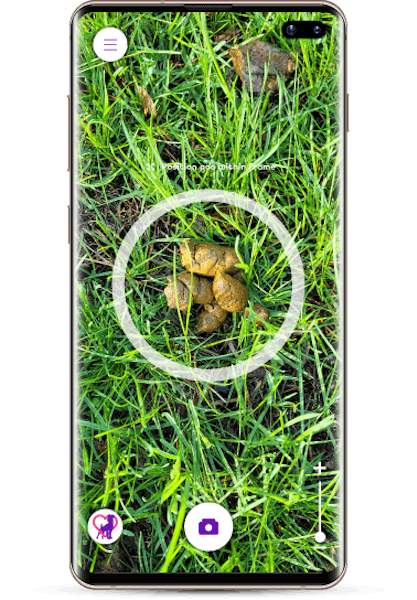Late winter's rising temperatures can bring out the worst in the yards of dog owners, especially when melting snow reveals piles of dog doo-doo making their spring debut.
While poo can be out of sight and out of mind during winter, once it's visible it should be removed, said Sarah Bhimani, Animal Humane Society communications strategist. Leaving it sit can be harmful to your dog, you and the environment.
"Make sure you're picking up the poo in the first place. That's the most important thing," Bhimani said. "Do it promptly so it doesn't pile up."
A yard littered with waste can put stress on your pooch. It also can cause health problems for humans by spreading diseases like E. coli, according to Hannah Sabroski, communications specialist at the Minnesota Pollution Control Agency.
The waste also carries diseases, bacteria and nutrients that can pollute local waters, making them unusable for swimming, boating or fishing.
"When dog poo runs off into the storm sewers, it ends up running untreated into rivers, wetlands and ponds," said Bhimani. "All the bacteria and nutrients and that leads to algae blooms and scum on the surface of water — that's why you want to avoid letting it run off and pick up [the poop] in the moment."
She also advises people with vegetable gardens to create a space where their dogs can defecate well away from any home-grown foods.
MPCA recommends not commercially composting dog poop, placing waste in at-home compost bins or burying it, again because of the spread of diseases and bacteria.
Get rid of it
One environmentally friendly way to dispose of dog poo is by flushing it down the toilet, according to the Environmental Protection Agency, which categorizes dog waste as an environmental pollutant.
People who live in the Metropolitan Council's seven-county service area can flush dog waste. The water will be treated at a wastewater facility, according to the National Park Service. (Because cat waste may contain a parasite that can survive the water treatment process and potentially harm wildlife, it should be disposed of in the trash.)
Just make sure you don't flush the bag the doo-doo was picked up in. And think twice about flushing a large piece of waste. If it's frozen, it could clog your pipes, Sabroski said.
If that's too messy for you, you can purchase biodegradable bags and pop the poop in the trash.
Keep on it
The best way to keep on top of what your dog produces is to clean your yard twice a week, said Marquise Lee, who works at Dr. Poolittle, a local dog doo-doo cleaning service.
Of course, maintaining that schedule can be difficult in winter, with heavy snows and plummeting temperatures.
Lee recommends using a pooper scooper, which makes it easier to maintain the mess.
There's also the PooBagger, invented by Tom Zurn of Eden Prairie. His scooper has a bag attached so the waste doesn't need to be transferred from the scooper. It also has teeth that can dig into the grass.
If you're out on a walk, Bhimani said, be sure to pick up after your dog — and keep the dog waste bags with you until you reach a garbage can.
"You've taken this step of bagging the poop — don't just leave it bagged on the street or on the sidewalk," she said. "Take it with you."
Get help
If you're overwhelmed with the winter cleanup, call in a professional. There are several dog waste pickup companies in the Twin Cities. They may be a tad busy this time of year.
"Right now, we're pretty busy with people calling for service as spring comes and the ice melt reveals all the poop," said Lee.
Rates charges by the pros vary based on number of dogs, their weight and frequency of pickups scheduled.
But for some dog owners, the cost is worth it. Especially after a long, hard winter like the one we're having.
